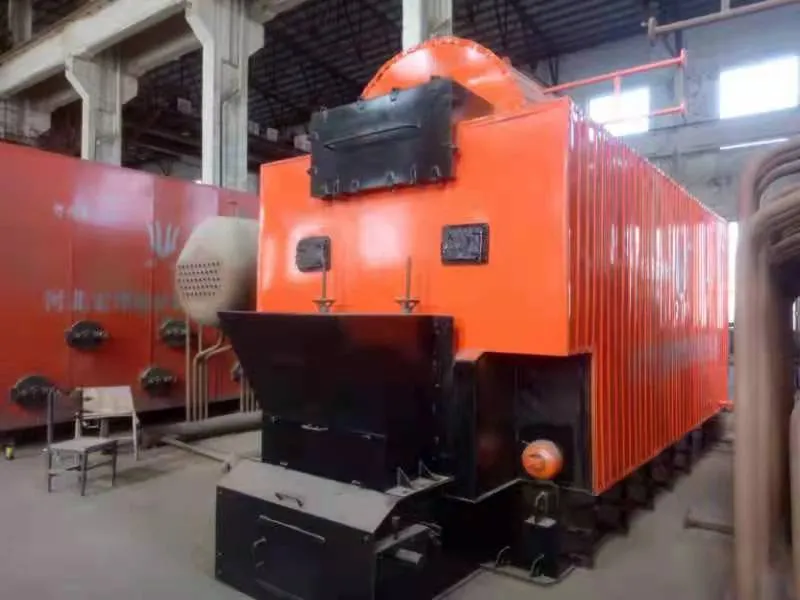
Kas . 21, 2024 01:23 Back to list
steam boiler design pdf
Steam Boiler Design Key Principles and Considerations
Steam boilers are vital components in various industrial processes, generating steam for heating, power generation, and other applications. The design of a steam boiler is a complex task that requires careful consideration of several interrelated factors, including thermal efficiency, fuel type, pressure requirements, and safety regulations.
1. Basic Components of Steam Boilers
A steam boiler consists of several key components that work together to produce steam efficiently. The main components include
- Shell and Tubes The shell contains water and steam, while the tubes allow heat exchange. The design can vary between fire-tube and water-tube boilers, with fire-tube entering the combustion gases through tubes and water-tube using water-filled tubes heated by flue gases.
- Burner The burner is responsible for combusting the fuel. Different burners are used depending on the fuel type—natural gas, oil, or solid fuels.
- Safety Valves These ensure that the pressure within the boiler does not exceed safe limits, preventing potential explosions.
- Water Level Controls These maintain the proper water level to ensure efficient operation. Low-water conditions can cause overheating and damage.
One of the primary design goals of a steam boiler is to maximize thermal efficiency. Thermal efficiency refers to the ratio of useful energy output to energy input. Designers must select materials and methods that minimize heat loss, which includes using insulation and optimizing the flue gas path. Modern boilers often incorporate economizers, which preheat the feedwater, enhancing efficiency by recovering waste heat.
3. Fuel Type Considerations
steam boiler design pdf

The choice of fuel directly impacts the boiler design. Different fuels have varying combustion characteristics, energy content, and emissions profiles. For instance, natural gas burns cleaner than coal, allowing for simpler designs with fewer emissions control requirements. However, solid fuel boilers may need more complex systems for ash removal and emissions control.
4. Pressure and Temperature Requirements
Steam boilers are designed to operate at specific pressures and temperatures, determined by the application. The design must accommodate these requirements to ensure safe operation. Higher pressures allow for increased energy output but come with elevated risks. The boiler materials must withstand the physical stresses associated with high-pressure steam, requiring careful material selection and rigorous testing to adhere to safety standards.
5. Safety Standards and Regulations
Safety is paramount in boiler design. Various organizations set standards to mitigate risks associated with high-pressure steam systems. In the United States, the American Society of Mechanical Engineers (ASME) sets codes for boiler and pressure vessel design, emphasizing safety through stringent regulations. Designers must ensure compliance with these standards concerning materials, design, and maintenance.
6. Maintenance Considerations
A well-designed steam boiler should also account for ease of maintenance. Regular inspections, cleaning, and component replacement are crucial for safe and efficient operation. Designers often incorporate features that allow easy access to critical components, making maintenance activities more manageable.
7. Environmental Impact
In today's world, the environmental impact of energy systems must be considered in the design of steam boilers. Many modern designs focus on reducing emissions and enhancing efficiency, aligning with global sustainability goals. Innovations such as flue gas recirculation, selective catalytic reduction, and advanced combustion technologies help minimize harmful emissions.
Conclusion
Designing a steam boiler involves a multifaceted approach that balances efficiency, safety, fuel type considerations, and regulatory compliance. As technology advances, the focus on environmental sustainability and energy efficiency becomes increasingly critical. Understanding these principles enables engineers to create better, safer, and more efficient steam boiler systems that meet the evolving demands of industry and society. Continuous research and innovation in boiler design will pave the way for improved performance and reduced environmental impacts in the future.
-
Best Steam Boiler Design PDF Free Design Calculation & Diagram Downloads
NewsJun.10,2025
-
Hot Boiler Water Heater Efficient Heating Solutions for Home & Commercial Use
NewsJun.10,2025
-
Steam Boiler Safety Devices High-Quality Protection Valves
NewsJun.10,2025
-
Ultimate Steam Boiler Checklist for Safety & Efficiency
NewsJun.10,2025
-
Optimal Hot Water Boiler Temperature Setting Guide
NewsJun.10,2025
-
Effective Hot Water Boiler Chemical Treatment Protect & Maintain
NewsJun.09,2025
Related PRODUCTS






















